So here comes the million-dollar question, why does anyone use Lightweight Linux distros? While all the modern Linux distros come with stunning and amazing desktop environments that ensure full utilization of GPU and other resources. There might be some best answers to this obvious question.
- If the computer has become old enough and you want to bring a new life to it
- The machine may be modern and latest, but it runs on low power like Raspberry Pi.
- Install it on a modern computer to save resources for other valuable and demanding tasks.
So, if your demand falls in the above-mentioned category, then you must go for the best lightweight Linux distro. But which one do you choose? While there are lots of options out there.
Best Lightweight Linux Distros
To give a timely and effective answer to the above question, I am here to share with you a list of the Best Lightweight Linux distros. So that you can choose the best-fitted one for your machine, let’s begin the countdown.
1. Tiny Core
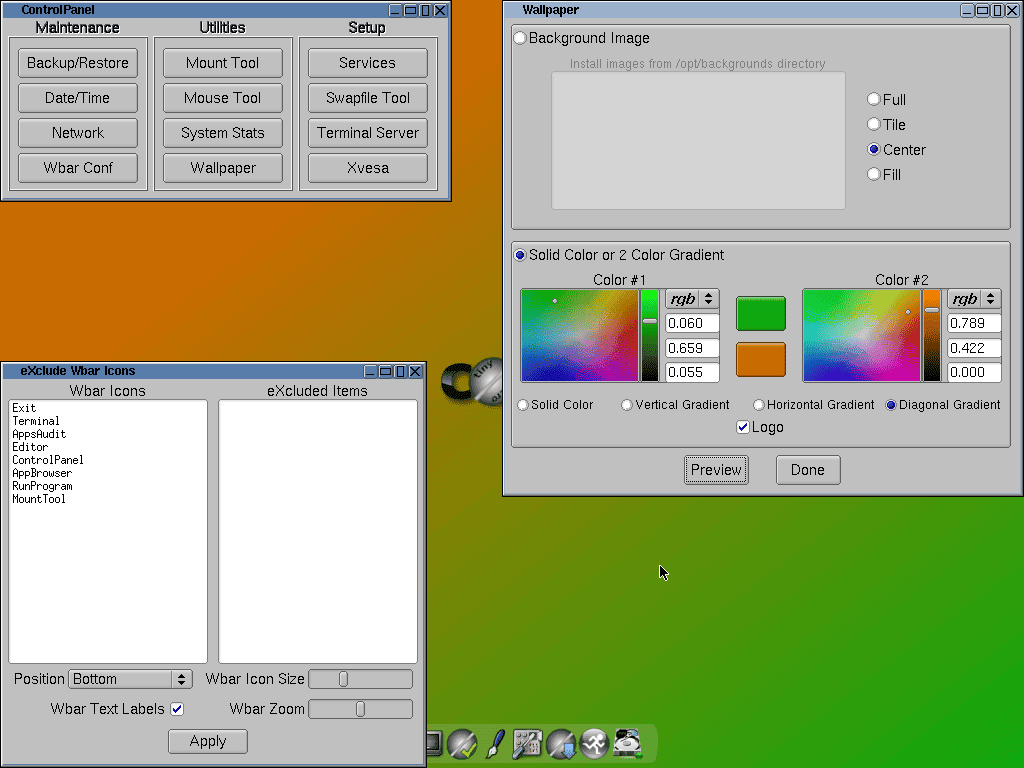
Tiny Core is the most lightweight Linux distro, only 15 MB, which was forked from a Damn Small project, but now it’s completely developed independently. This Linux distro comes with a minimal interface and very little software installed.
Main Features
- Perfect for any old or ancient computer.
- Takes very less time to boot than any other OS out there.
- By default, it comes with FLTK/FKWM and BusyBox desktop.
- A total of three editions are available: Core, Tiny Core, and CorePlus.
- It comes with a set of software installed, but you can also install other applications later.
2. Linux Lite
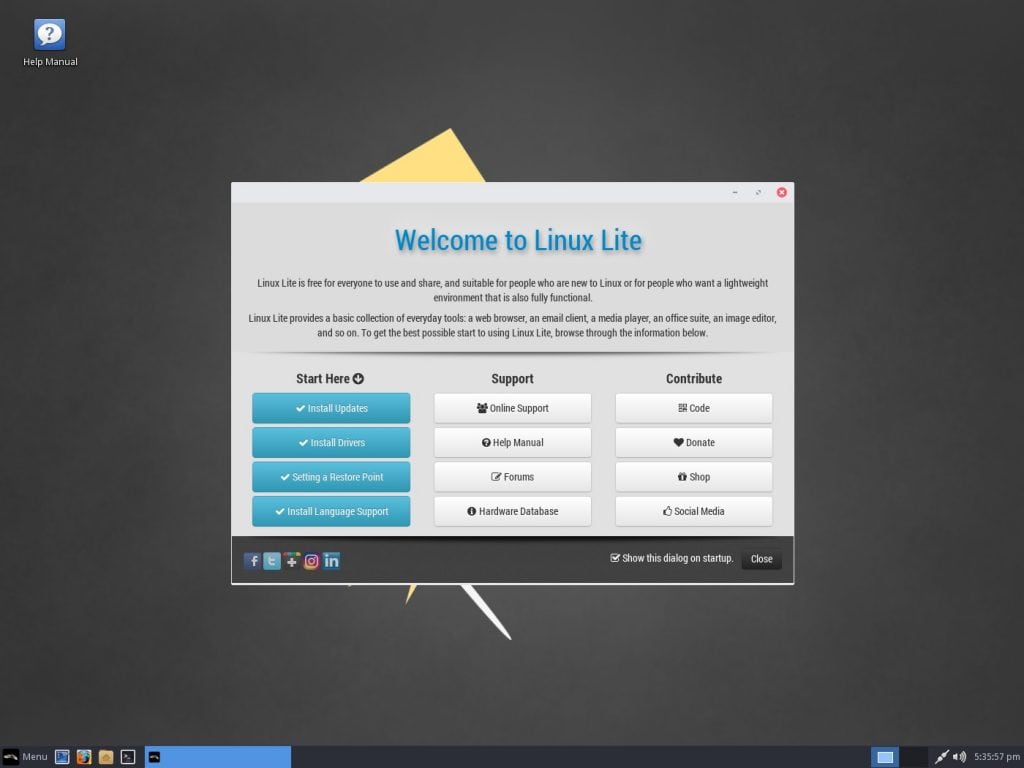
Linux Lite is one of the most popular and easy-to-use lightweight Linux distros out there. It’s based on Ubuntu LTS, which ensures access to thousands of Ubuntu software through its ever-growing app repository. It is a perfect lightweight Linux distro for any old laptop, as it requires little power and resources to run.
Main Features
- It can run smoothly on all sorts of older hardware.
- Based on Ubuntu LTS.
- It uses an XFCE desktop environment, which is simple and easy to use.
- This distro is good and best fitted for any newbie Linux user.
- Supported by Ubuntu software repository.
Minimum System Requirement
- 700MHz processor
- 512MB RAM
- VGA screen 1024×768 resolution
- DVD drive or USB port for the ISO image
- At least 5 GB of free disk space
3. Trisquel Mini
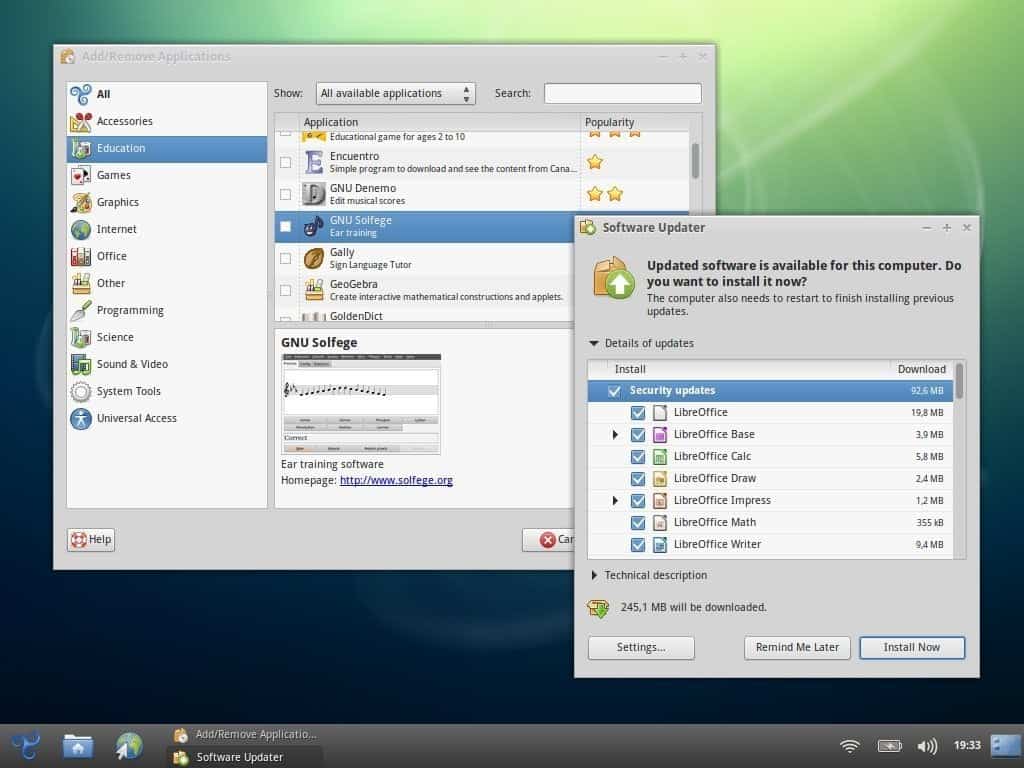
Trisquel Mini is a smaller and lighter version of the main distro Trisquel, which is based on Ubuntu LTS. This lightweight Linux distro is especially suitable for old machines and netbooks with lower power requirements.
Main Features
- It uses the minimal LXDE desktop environment and X Window system.
- Perfect alternatives to traditional GNOME or KDE/Qt applications.
- Synaptic Package Manager can be used to install the necessary software.
- You can use Live CD for testing purposes.
- It offers a familiar Ubuntu-based graphical installer during permanent installation.
4. Puppy Linux
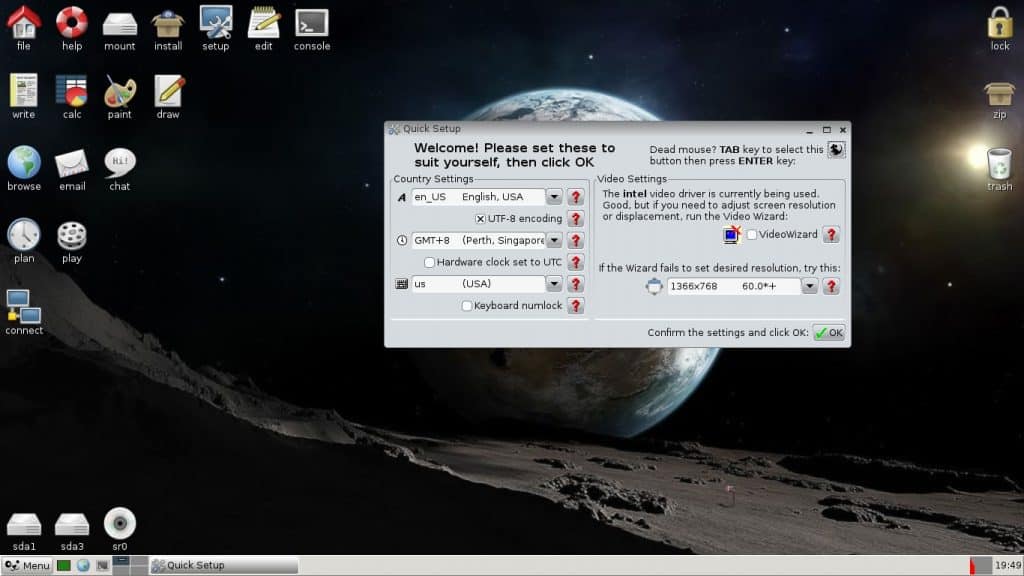
Puppy Linux is one of the best lightweight Linux distros available. This distro takes very little resources to run on an old machine and is aimed at creating slim, sleek, and fast distros. Many unconventional but effective and useful apps and tools come pre-bundled, like Homeback for finance management, AbiWord, MyPlayer, and graphical tools to manage Samba shares and set up a firewall, etc.
Main Features
- It can boot directly from RAM and takes very few resources.
- DVDs or flash drives can be used as storage devices if you run them from those devices.
- A set of best alternatives and less resource-hog software comes pre-packed.
- The latest version of Puppy Linux is based on Ubuntu, so users will get access to the Ubuntu software repository to install necessary applications.
Minimum System Requirement
- 500MHZ processor
- 128MB RAM
- 512MB free hard drive space to create an optional save file
- No hard drive is required to boot a Live Disc.
- CD-ROM any speed
3. Lubuntu
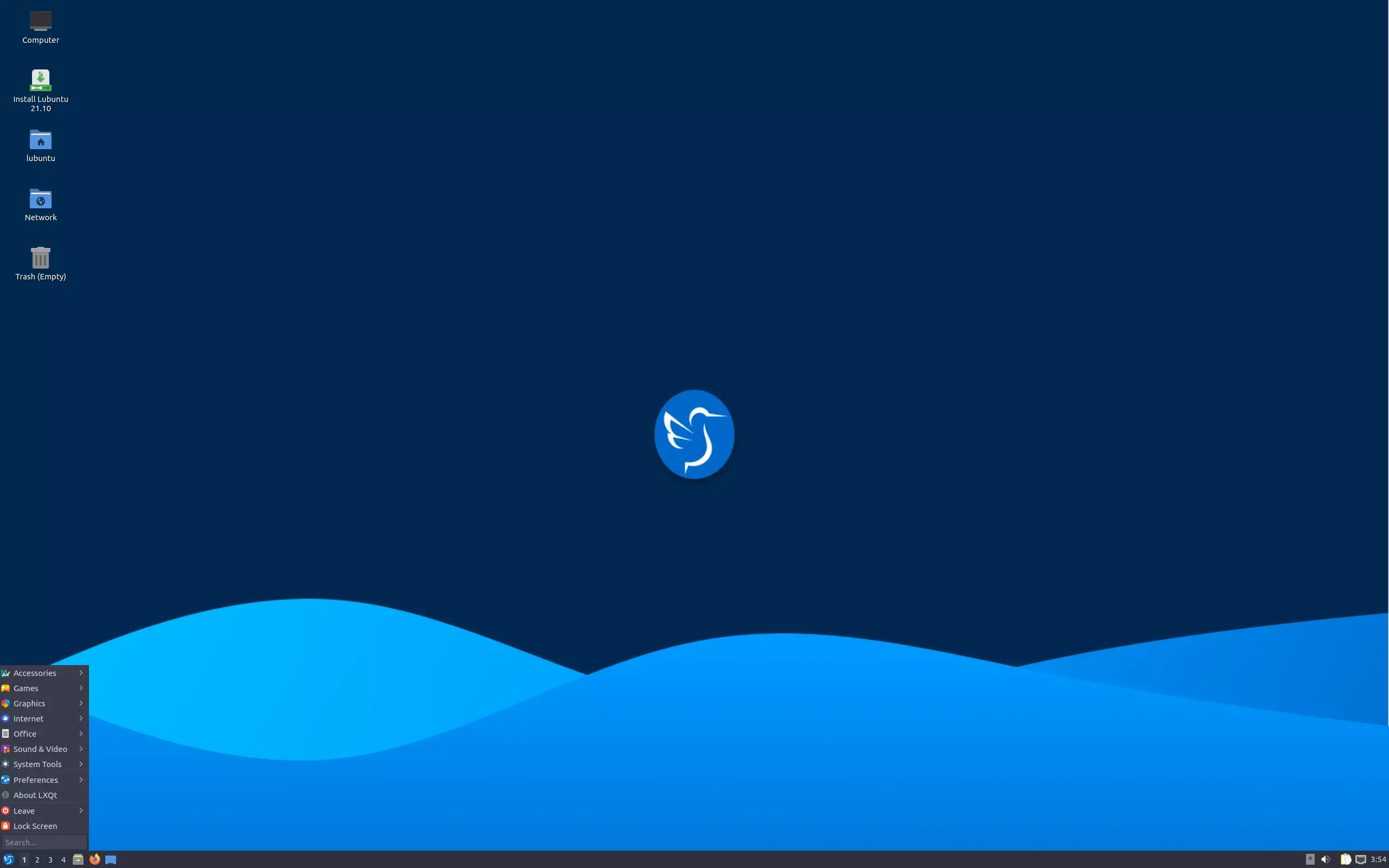
This lightweight Linux distro is for those who do not want to compromise with their favorite software but want to use a less resource-hogging distro for their old machine. Lubuntu is basically designed for old netbooks and computers, and it has an LXDE desktop environment that is focused on being fast and energy efficient.
Main Features
- It is the perfect lightweight Linux distro for netbooks and older machines.
- Comes with a set of essential software and tools like Office, the internet, multimedia, graphics apps, and some useful tools and utilities.
- It offers less resource-intensive software and the best alternative whenever possible.
- It supports the Ubuntu software repository, which gives access to thousands of additional packages that can be installed through graphical software management tools.
- It is merged with Razor-qt and is being developed as LXQt.
Minimum System Requirement
- Pentium II or Celeron CPU with PAE support
- 128MB of RAM
- 2GB of hard-drive
Honorable Mention
There are lots of other light Linux distros available in the market; a few of them are given below as honorable mention:
- Absolute Linux
- Manjaro Linux XFCE Edition
- wattOS
- antiX
- Porteus
- BunsenLabs Linux
- Q4OS
- SliTaz
This is a very small list of the best lightweight Linux distros, but there are hundreds of tiny distros out there, which you can find on DistroWatch. I have chosen the above one based on stability, less resource consumption, ease of use, simple interface, and solid security.
All the above lightweight Linux distros are very easy to install, have a simple interface, and run smoothly on older computers and netbooks.
What’s Your Favorite one?
Did you like this list of the Best Lightweight Linux Distros? If you find any other best lightweight Linux distro, feel free to share it with us in the comment section so that it can be included in the next update. Thanks for spending your valuable time here.
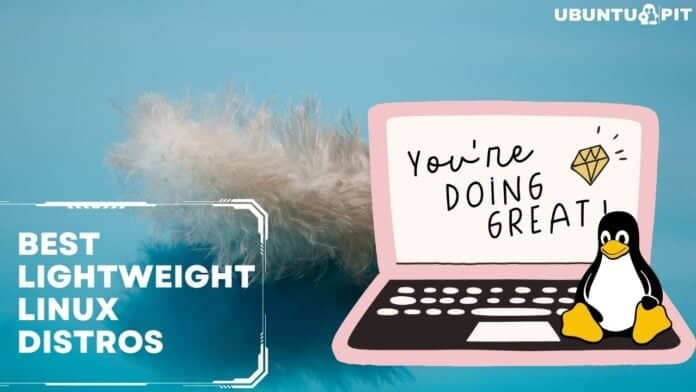
Theres a lesser known intro called Zorin OS and for me it works great on an old netbook with 2 gigs of RA<
Fast Linux is great for older hardware. It’s a DIY load of Debian tailored for old computers. I’m using it now on a 1.2GHz cpu laptop!
For me, best choice are Puppy family from the lighter Thar to Xenial or Bionic and Linux Lite. We need a light distro that have some basic software (Libre Office or, at least. Abiword, VLC, simplescreen recorder, that records areas of your screen and as such can copy Youtube videos, Gimp, etc), easy installation of extra applications and a browser that can digest sites with lots of CSS coding. Older browsers can not handle them. Even some browsers can not read microsoft site!
Two more light distros: Uruk (based on Trisquel) and Sparkylinux.
Interesting article, but I have a really hard time seeing anything based on Ubuntu as light weight. And the Lubuntu minimums are pure fantasy. It won’t even run on a system with the base specs they state–Pentium II is pure fantasy. Some tester may have a PII they tricked it into running on, but it fails on all of mine. On a PIII is is a hopeless pig, and unusable though it sort of runs. P4 is possible, but it’s still very, very slow. Atom single core is just as bad.
I haven’t tried the new Puppy yet, but it’s considerably heavier than its earlier versions. I do look forward to giving it a spin on my older systems.
Tiny Core really is light, but it’s more like an embedded Linux than a regular light Linux.
Unlisted, even as a “contender”, is AntiX. AntiX Full will run capably on a 700MHz Atom with 1GB of RAM. A second GB makes it much faster. It needs just a smidge over 4GB of disk to install. It runs amazingly well off a USB stick or SD card, even on an old system with USB 2.0. And that’s the -heaviest- version of AntiX. From heaviest to lightest the AntiX versions are Full, Base, Core, and Net. Base drops LibreOffice and a couple of other full-fat applications, Core has only the most basic graphic interface, and Net is headless.
Thank you, Mark Graybill! An honest comment.
I’m getting a bit tired of seeing upper-middle weight distros being passed off as light. Also getting tired of fanboys not seeing their fav distro listed (regardless of the theme of the article) and asking “What about my bloated distro? Why isn’t my bloated distro not listed among lightweight distros for old computers?”.
As soon as I see Lubuntu on any list of lightweight anything… I move on. The only two that are lightweight on this list are TinyCore and Puppy. Tried them both. Also tried antiX – amazing on old hardware. I even like MX on old hardware (a kinda’ fuller-featured version of antiX) – it’s faster than Linux Lite and Lubuntu. Source? I actually try them all on my old equipment.
Have you tried Trisquel Mini? I don’t think you have cos you didn’t write it off as not being lightweight. It’s one of the lightest on the list. I just tried it yesterday and when idle, it was taking 150 mb of ram. Is it not lightweight?
Check out kodipup, one of the best looking linuxes out there:
https://www.murga-linux.com/puppy/viewtopic.php?t=110383
It’s a version of “puppy linux”
Hey, why is Watt-OS not listed? Check it out on distrowatch. I can warmly recommend it over bodhi and lubuntu.
Thanks for your suggestion. Now it’s included in honorable mention.
What about elementaryOS?
Elementary OS is one of the best looking Linux Distro. But it takes more resources than any other mentioned above.
I switch from Linux Lite 3.4 to MX 16 .I find MX Linux 16 to be stable and fast and lite
Agree…IMHO MX16 is totally underrated…I love Puppy Linux but haven’t found a more functional, hassle free and fun distro than MX16.
You missed Peppermint Linux too
It’s a Small list of lightweight Linux distros. So i could not accumulate all but i have included peppermint in mentionable para.
antiX is good to old machines
I agree with you. Thanks for your comment
Linux Lite is my favorite.
Thanks for your comment.
I think you missed Gentoo Linux
Basically, it’s really difficult to enlist only 5 lightweight Linux Distros. I am totally agreed with you. Gentoo Linux is one of the smallest Linux distros.
What is great about Puppy Linux is that they have several different sub-projects, each geared to a specific level of newer or older hardware. What I usually do on a person’s computer is to start with Lubuntu if the hardware isn’t really old, and then work through the various Puppy’s if I have to, until I find a version that is speedy enough. It is all about a trade-off of GUI and features verses speed. I have a lot of practice with people wanting to replace XP with an OS that continues to get security and application updates.
This piece of information, you shared, is really useful and effective for those who want to use Lightweight Linux Distros in their old machine. Thanks for your valuable comment.
I have used many of them because I have no money enough to buy a modern PC or Laptop like many people of course and the best for me is Puppy Linux. Thanks for the article. See you.
Glad, you like it.